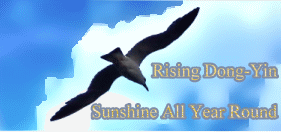The lighthouse is situated at Eluanbi in the southernmost tip of Taiwan. In 1867, an US merchant ship met a violent storm and lost its course at sea when heading for Nioujhuang from Shantou. The ship struck a reef and sunk near Cisingjiao which was nine nautical miles away in the southwest of Eluanbi. The captain and sailors swam to Taiwan safely; however, they were captured and skilled later. Therefore, The US government urged that we should set up a lighthouse there. Besides, Okinawan fishermen once died in maritime accidents as well. Japan government also asked us to set up a lighthouse at that time. |
In 1875, the Ching Dynasty government sent five hundred soldiers and a commissioned officer Wang Fulu for this difficult task. It was hard to deal with the task because the area was dominated by the barbarian aboriginal peoples who used to interrupt the construction. The officials of the Ching Dynasty employed strategies to keep them satisfied and allegiant. In 1875, the Ching Dynasty government sent five hundred soldiers and a commissioned officer Wang Fulu for this difficult task. It was hard to deal with the task because the area was dominated by the barbarian aboriginal peoples who used to interrupt the construction. The officials of the Ching Dynasty employed strategies to keep them satisfied and allegiant. Construction of the lighthouse was completed in 1883. It took more than 200,000 taels. The lighthouse is made of white iron and equipped with the first-class fixed lighting kerosene lamp with the five-layered wick. The lamp with 500 candlepower features powerful lighting. To prevent the trespass from aboriginal people, the lighthouse shone warning red arch light to sea areas around Cisingjiao. The lighthouse has special structure and was regarded as a fort. The bottom tier was used as the gun emplacement with embrasures on the enclosing walls. The tower was also surrounded by ditches, and equipped with firearms for self-defense. The tower had been garrisoned by soldiers for a long time. Therefore, the lighthouse is regarded as the unique armed tower in the world. |
The lighthouse was damaged during the war when Taiwan is ceded to Japan at the initial stage. Afterwards, Japan government repaired the tower during the Japanese Occupation Period, and re-equipped 26,000-candlepower kerosene incandescent lamp with larger power in the lighthouse in 1910. Then, the lighthouse was re-equipped with occulting-light lamp later in 1931. |
The lighthouse was destroyed by air attacks during World War II. |
The Taiwan Customs re-equipped the lighthouse with the sixth acetylene flashlight lamp, which flashed once every four seconds after the Recovery of Taiwan in 1947. Next year, the lighthouse was re-equipped with the fifth direct current (DC) flashlight lamp. In the following years, the lighthouse flashed once every ten seconds with 3,000-candlepower white light instead. |
The lighthouse was under reconstruction in 1962. The tower top was re-equipped with the new large-size rotated-lens electric lamp with 1,800,000-candlepower. The lamp flashed once every ten seconds. The lighthouse has the strongest power in Taiwan. |
The lighthouse was surrounded by forests when it was built. At present, the lighthouse is a scenic spot in the Kenting National Park where there are numerous visitors. The lighthouse sits adjacent to the Pacific Ocean on the left, faces the Bashi Channel, and extends to Luzon in the Philippines. The lighthouse is ranked as the Eight Wonders of Taiwan because of its gorgeous natural landscapes. |
Height of Lighthouse: 21.4 meters |
Height of Light (above H.W.): 56.4 meters |
Nominal range: 27.2 nautical meters |



